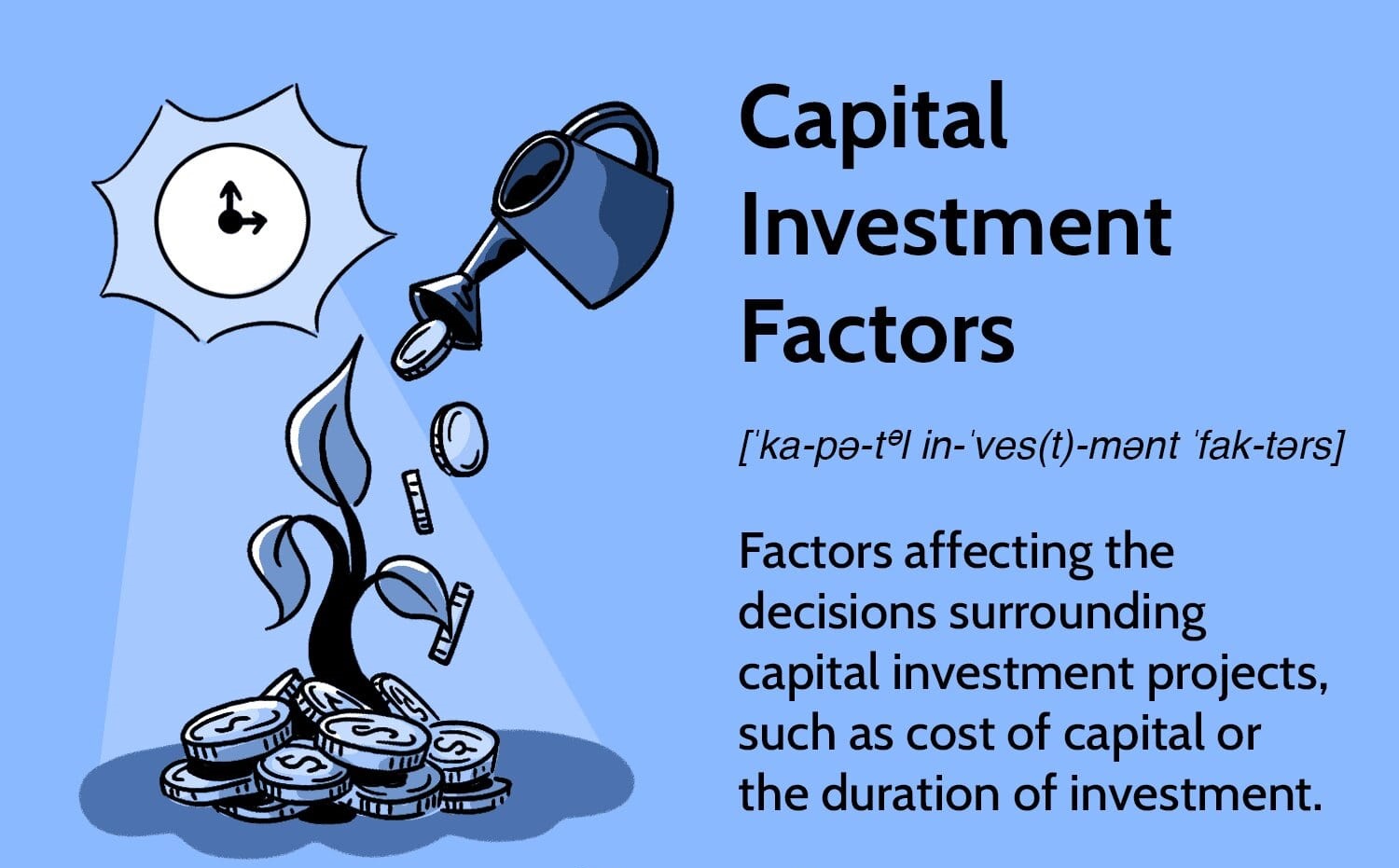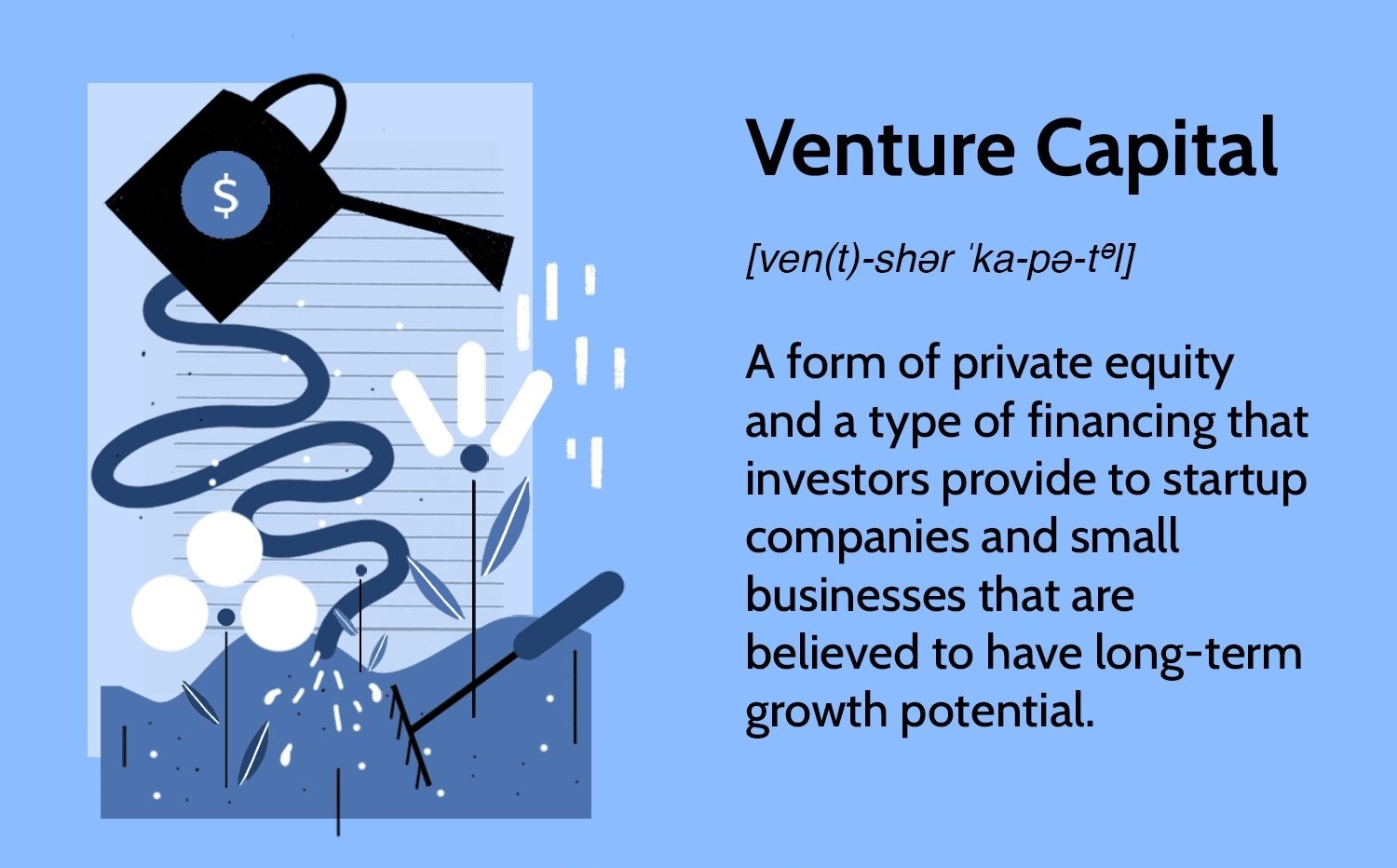Introduction
Welcome to the exciting world of capital investments, where strategic decisions are made to allocate funds to projects and assets that have the potential to generate long-term returns. Capital investment is a crucial aspect of business planning and plays a vital role in driving growth and profitability. In this article, we will explore the essential aspects of capital investments, including their definition, importance, types, financial analysis, factors to consider, and the benefits and risks associated with them.
Capital investments refer to the allocation of financial resources towards the acquisition, development, or enhancement of long-term assets such as machinery, buildings, technology, or infrastructure. These investments are intended to provide a return on investment (ROI) over an extended period, typically spanning several years. Unlike operational expenses, which are incurred to maintain day-to-day operations, capital investments are made with the expectation of generating future income and increasing the value of the business.
The importance of capital investments cannot be overstated. They serve as a gateway to business expansion, increased competitiveness, and innovation. By strategically investing in capital assets, companies can enhance their production capabilities, improve efficiency, and meet the evolving needs of their customers. Capital investments also play a pivotal role in attracting investors, as they demonstrate a company’s commitment to long-term growth.
There are various types of capital investments, each serving a specific purpose. Tangible assets, such as buildings and equipment, are commonly acquired to support manufacturing operations or expand physical infrastructure. Intangible assets, such as intellectual property or software, are crucial for companies in the technology sector. Additionally, companies may make investments in research and development (R&D) to foster innovation and stay ahead of the competition.
Before making a capital investment, a thorough financial analysis is essential. Financial metrics like net present value (NPV), internal rate of return (IRR), and payback period are used to evaluate the feasibility and potential profitability of the investment. This analysis helps businesses make informed decisions about allocating their financial resources to projects with the highest potential returns.
While financial analysis provides valuable insights, it is not the sole consideration in capital investments. Factors such as market conditions, regulatory frameworks, technological advancements, and industry trends also play a significant role in shaping investment decisions. It is crucial to assess both internal and external factors to ensure the investment aligns with the company’s strategic objectives and has a positive impact on its long-term growth and profitability.
Capital investments offer numerous benefits, such as increased operational efficiency, improved competitiveness, and enhanced market positioning. However, there are also risks associated with them. Economic uncertainties, changing market dynamics, and project-specific challenges can impact the success of the investment. It is important for business leaders to carefully evaluate the risks and rewards before committing substantial financial resources to any capital investment.
In the following sections, we will delve deeper into the various types of capital investments, explore the financial analysis techniques used, and discuss real-life case studies to illustrate the potential impact of successful capital investments. So, let’s embark on this journey into the world of capital investments!
Definition of Capital Investments
Capital investments refer to the allocation of financial resources towards the acquisition, development, or enhancement of long-term assets that are expected to generate a return on investment (ROI) over an extended period. These investments are often aimed at improving the productive capacity, efficiency, or market positioning of a business.
Capital investments are crucial for businesses as they contribute to long-term growth and profitability. Unlike operational expenses, which are necessary for the day-to-day functioning of a business, capital investments are strategic decisions made to support future growth and generate income beyond the immediate term.
There are two main types of capital investments: tangible and intangible. Tangible investments involve the acquisition of physical assets such as machinery, equipment, real estate, or infrastructure. These assets are essential for businesses engaged in manufacturing or production activities.
Intangible investments, on the other hand, do not involve physical assets but instead focus on intellectual property, research and development (R&D), software, or brand development. These types of investments are particularly relevant for companies operating in the technology, software, or creative industries where intellectual property rights and innovation drive competitive advantages.
Capital investments are driven by the expectation of generating a positive return on the initial investment. This return can be in the form of increased revenue, cost savings, improved efficiency, or enhanced market share. However, it is important to note that capital investments carry inherent risks, and the expected returns may not always materialize as planned.
One of the key financial analysis tools used in evaluating capital investments is the net present value (NPV). NPV assesses the profitability of an investment by comparing the present value of expected future cash flows with the initial investment. If the NPV is positive, it indicates that the investment is expected to generate a return that exceeds the cost of capital.
Another commonly used metric is the internal rate of return (IRR), which measures the rate of return that the investment is expected to yield over its lifetime. The higher the IRR, the more attractive the investment is, as it indicates a higher rate of return than the company’s cost of capital.
Other factors to consider in evaluating capital investments include the payback period, which calculates the length of time it will take for an investment to recover its initial cost, and the risk associated with the investment. Assessing the risk involves considering factors such as market conditions, competition, regulatory changes, and technological advancements.
In summary, capital investments involve the allocation of resources towards long-term assets that are expected to generate a return on investment. These investments are crucial for business growth and can take the form of tangible or intangible assets. Financial analysis techniques such as NPV, IRR, payback period, and risk assessment are used to evaluate the feasibility and profitability of capital investments.
Importance of Capital Investments
Capital investments play a pivotal role in driving business growth and ensuring long-term success. They are essential for companies looking to expand their operations, improve productivity, and stay competitive in a dynamic marketplace. Let’s explore the key reasons why capital investments are of paramount importance.
1. Business Expansion: Capital investments provide the financial fuel needed for businesses to expand their operations and tap into new markets. Whether it be acquiring new facilities, launching new products or services, or entering new geographic regions, these investments enable companies to seize growth opportunities and increase their market share. By making strategic investments in assets, businesses can position themselves for increased revenue generation and overall business expansion.
2. Improved Efficiency: Investing in new technology, equipment, or infrastructure can greatly enhance operational efficiency. By leveraging the latest technological advancements, businesses can streamline their processes, automate manual tasks, and improve productivity. This, in turn, leads to cost savings and increased output, allowing businesses to maximize their resources and achieve higher profitability.
3. Competitive Advantage: Capital investments are often made to gain a competitive edge in the market. By investing in research and development (R&D) or innovative technologies, businesses can develop new products or services that differentiate them from their competitors. These investments in intangible assets such as intellectual property or proprietary software can create barriers to entry, making it difficult for competitors to replicate their offerings. This helps businesses to attract and retain customers, ultimately leading to increased market share and long-term sustainability.
4. Customer Satisfaction: Capital investments focused on improving customer experiences can have a significant impact on customer satisfaction and retention. For example, investing in customer relationship management (CRM) systems, improving website functionality, or enhancing customer support capabilities can result in better communication and service delivery. This fosters customer loyalty and can lead to increased sales, repeat business, and positive word-of-mouth referrals.
5. Attracting Investors: Capital investments demonstrate a company’s commitment to long-term growth and profitability. They portray a business as forward-thinking and capable of delivering substantial returns to investors. This can help attract both equity and debt investors who are willing to support the company’s growth trajectory. Furthermore, a strong track record of successful capital investments can enhance a company’s reputation in the investment community, making it easier to secure additional funding in the future.
6. Long-Term Financial Stability: Capital investments contribute to the overall financial stability of a business. By investing in assets that generate steady cash flows over an extended period, businesses can reduce their reliance on short-term revenue streams. This provides stability and resilience, even during economic downturns or industry volatility. Furthermore, successful capital investments can lead to increased profitability and higher return on investment, strengthening the financial position of the business.
In summary, capital investments are of utmost importance for businesses seeking growth, competitiveness, and long-term success. From expanding operations and improving efficiency to gaining a competitive advantage and attracting investors, these investments play a critical role in shaping the future trajectory of a company. By strategically allocating resources towards capital assets, businesses can position themselves for sustainable growth and profitability in an ever-evolving business landscape.
Types of Capital Investments
Capital investments come in various forms, each serving a specific purpose and aligning with different business objectives. Let’s explore the different types of capital investments that companies make to enhance their operations, drive growth, and generate long-term returns.
1. Tangible Assets: Tangible capital investments involve the acquisition or improvement of physical assets that can be seen and touched. These assets include buildings, machinery, equipment, vehicles, and real estate. Investing in tangible assets is common in industries such as manufacturing, construction, and transportation, where these assets are crucial for business operations. By acquiring or upgrading these assets, companies can enhance their production capacity, improve efficiency, and meet the increasing demands of their customers.
2. Intangible Assets: Intangible capital investments focus on assets that do not have a physical presence but hold significant value for businesses. Examples of intangible assets include patents, trademarks, copyrights, software licenses, and brand development. Investing in intangible assets is particularly relevant for technology companies, software developers, and creative industries. These investments help protect intellectual property, foster innovation, and create a competitive advantage. Intangible assets can generate substantial value for businesses through licensing agreements, royalties, or increased market share.
3. Research and Development (R&D): R&D capital investments are made to support innovation and development of new products, processes, or technologies. Businesses invest in R&D to stay ahead of the competition, explore new markets, and drive growth through continuous improvement and innovation. R&D investments are common in industries such as pharmaceuticals, technology, and automotive, where advancements and breakthroughs are critical for success. Successful R&D investments can lead to patents, improved products, and market disruption.
4. Infrastructure Investments: Infrastructure capital investments involve improving or expanding a company’s physical infrastructure, such as transportation networks, power grids, telecommunications systems, or water supply facilities. These investments are often made by utility companies, governments, or public-private partnerships. Infrastructure investments aim to enhance connectivity, efficiency, and reliability, benefiting both businesses and society as a whole.
5. Acquisitions and Mergers: Capital investments can also take the form of acquiring or merging with other companies. Mergers and acquisitions (M&A) can provide businesses with access to new markets, diversify their product offerings, and consolidate their industry positions. These investments are often driven by strategic goals such as expanding market share, gaining synergies, or achieving economies of scale.
6. Human Capital: Investing in human capital is another important type of capital investment. This involves the recruitment, training, and development of a skilled workforce. By investing in employee training programs, leadership development, and talent acquisition, businesses can enhance their productivity, innovation, and overall performance. Developing a competent and motivated workforce can be a significant source of competitive advantage.
In summary, capital investments come in various forms, including tangible assets, intangible assets, R&D, infrastructure, acquisitions and mergers, and human capital. Each type of investment serves a specific purpose and contributes to the overall growth and success of a business. By strategically allocating resources to different types of capital investments, companies can strengthen their competitive position, drive innovation, and achieve sustainable long-term growth.
Financial Analysis of Capital Investments
When making capital investments, conducting a comprehensive financial analysis is crucial to assess the feasibility and potential profitability of the investment. Financial analysis techniques provide insights into the expected returns, risks, and overall financial impact of the investment. Let’s explore some key financial analysis methods used in evaluating capital investments.
1. Net Present Value (NPV): NPV is a widely used financial analysis tool that calculates the difference between the present value of expected cash inflows and the initial investment cost. By discounting future cash flows back to their present value, NPV assesses whether the investment is expected to generate a positive or negative return. A positive NPV indicates that the investment is expected to yield a return higher than the cost of capital, making it an attractive investment option.
2. Internal Rate of Return (IRR): IRR is another critical financial analysis metric used to evaluate the profitability of an investment. It is the discount rate at which the present value of expected cash inflows equals the initial investment cost. In simpler terms, IRR represents the rate of return that the investment is expected to yield. A higher IRR is usually more desirable, as it indicates a higher return than the cost of capital. Comparing the IRR of different investment options helps businesses make informed decisions regarding the most lucrative opportunities.
3. Payback Period: The payback period measures the length of time required for an investment to recover its initial cost. It is calculated by dividing the initial investment by the expected annual cash inflows. A shorter payback period is generally preferred, as it indicates a faster return on investment. However, the payback period should be evaluated alongside other financial analysis metrics, as it does not consider the profitability of the investment beyond the breakeven point.
4. Discounted Cash Flow (DCF) Analysis: DCF analysis involves projecting the expected cash flows generated by the investment over its lifetime and discounting them back to their present value. This analysis takes into account the time value of money, as cash received in the future is worth less than cash received today. By discounting future cash flows, DCF analysis provides a more accurate representation of the true value and financial viability of an investment.
5. Sensitivity Analysis: Sensitivity analysis is crucial for assessing the potential risks and uncertainties associated with an investment. It involves varying key assumptions used in the financial analysis, such as sales volume, pricing, or operating costs, to understand how changes in these variables can impact the financial outcomes. Sensitivity analysis helps businesses identify the critical factors that have the most significant impact on the investment’s profitability and make contingency plans to mitigate risks.
6. Risk Assessment: Assessing the risks associated with a capital investment is an integral part of financial analysis. Factors such as market conditions, competition, regulatory changes, technological advancements, and project-specific challenges can influence the success of an investment. Conducting a thorough risk assessment helps businesses understand potential obstacles and identify strategies to mitigate risks.
In summary, financial analysis techniques such as NPV, IRR, payback period, DCF analysis, sensitivity analysis, and risk assessment provide valuable insights into the financial feasibility, profitability, and risks of capital investments. By leveraging these analysis methods, businesses can make informed decisions, allocate resources effectively, and maximize their returns on investment.
Factors to Consider in Capital Investments
When evaluating capital investments, it is essential to consider various factors that can have a significant impact on the success and profitability of the investment. These factors help businesses assess the feasibility, risks, and potential returns associated with the investment. Let’s explore some key factors that should be taken into consideration when making capital investment decisions.
1. Market Conditions: The current market conditions and future market potential should be thoroughly assessed. Businesses should evaluate factors such as market demand, competition, industry trends, and potential barriers to entry. Understanding the market dynamics and growth opportunities is crucial in determining the viability of the investment and its alignment with market needs.
2. Regulatory Environment: It is essential to consider regulatory frameworks and compliance requirements that may impact the investment. Businesses should assess any legal, environmental, or industry-specific regulations that may affect the acquisition, development, or operation of the capital asset. Compliance with regulations is crucial for avoiding penalties, legal issues, and reputation damage.
3. Technological Advancements: Technology plays a vital role in driving business innovation and operational efficiency. When making capital investments, it is important to consider the potential impact of technological advancements. This may involve assessing the compatibility of the investment with existing technology infrastructure, as well as evaluating emerging technologies that could enhance the investment’s performance and sustainability.
4. Financial Feasibility: Conducting a thorough financial analysis is essential in determining the financial feasibility of the investment. This includes evaluating factors such as the initial investment cost, expected cash inflows and outflows, projected revenues, costs, and profitability. The financial analysis helps businesses gauge the potential return on investment, assess the risk-reward trade-off, and determine the investment’s impact on the company’s financials.
5. Strategic Alignment: Capital investments should align with the company’s overall strategic goals and objectives. Consider whether the investment is consistent with the company’s long-term vision, mission, and core competencies. Assess whether the investment supports the company’s growth strategy, enhances its competitive advantage, or enables diversification into new markets or product lines.
6. Scalability and Flexibility: Evaluating the scalability and flexibility of the investment is important, especially for businesses with growth aspirations. Consider how the investment can accommodate future expansion or adapt to changing market conditions. Assess the potential to scale operations, incorporate new technologies, or modify the investment to meet evolving customer needs.
7. Project Risks: Identify and assess the risks associated with the investment. This includes project-specific risks such as construction delays, cost overruns, or technical challenges. Additionally, consider broader risks such as economic uncertainties, currency fluctuations, or geopolitical factors. A comprehensive risk assessment allows businesses to develop risk mitigation strategies and contingency plans.
8. Environmental and Social Impact: In today’s business landscape, considering the environmental and social impact of investments is increasingly important. Evaluate the sustainability and social responsibility aspects of the investment, including its carbon footprint, resource consumption, and social implications. This consideration contributes to a company’s reputation, stakeholder relationships, and long-term sustainability.
In summary, when making capital investments, it is crucial to consider factors such as market conditions, regulatory environment, technological advancements, financial feasibility, strategic alignment, scalability and flexibility, project risks, and environmental/social impact. Taking these factors into account allows businesses to make well-informed investment decisions and maximize the potential for long-term success and profitability.
Benefits and Risks of Capital Investments
Capital investments offer both benefits and risks for businesses. Understanding these potential outcomes is crucial in making informed investment decisions and managing the associated risks. Let’s explore the key benefits and risks of capital investments.
Benefits:
1. Increased Operational Efficiency: Capital investments can lead to improved operational efficiency by upgrading technology, equipment, or infrastructure. This can result in streamlined processes, reduced costs, and increased productivity. Enhanced operational efficiency enables businesses to meet customer demands more effectively and gain a competitive edge.
2. Competitive Advantage: Strategic capital investments can provide businesses with a competitive advantage. By investing in research and development (R&D), innovation, or market expansion, companies can differentiate themselves from competitors. This helps attract customers, increase market share, and establish a strong market position.
3. Business Growth: Capital investments play a vital role in driving business growth. By allocating resources towards acquiring new assets, expanding operations, or entering new markets, businesses can seize growth opportunities. Capital investments enable companies to scale their operations, increase revenue generation, and tap into new customer segments.
4. Increased Revenue and Profitability: Successfully executed capital investments can generate increased revenue and profitability. By making wise investments in assets or projects that generate sustainable cash flows, companies can realize a return on investment that exceeds the cost of capital. This leads to improved financial performance and shareholder value.
5. Long-term Financial Stability: Capital investments contribute to the long-term financial stability of a business. By investing in assets that generate a steady income stream, companies can reduce their reliance on short-term revenue sources. This enhances financial resilience, allows for better management of economic uncertainties, and provides a solid foundation for future growth.
Risks:
1. Economic Volatility: Economic fluctuations and market uncertainties can impact the performance of capital investments. Changes in interest rates, inflation rates, or geopolitical factors can affect revenue streams, project viability, or market demand. Economic risks should be carefully evaluated, and contingency plans should be in place to mitigate their potential impact.
2. Project-specific Challenges: Capital investments often involve complex projects with inherent risks. Construction delays, cost overruns, technical difficulties, or regulatory hurdles can impact the success of the investment. Detailed project planning, rigorous risk assessment, and project management strategies are essential in navigating these potential challenges.
3. Changing Market Conditions: Market dynamics can evolve and disrupt the anticipated returns of an investment. Shifts in customer preferences, technological advancements, or new market entrants can impact the competitive landscape and affect the performance of capital investments. Businesses must continuously monitor market conditions and adapt their strategies accordingly.
4. Financing and Cash Flow Constraints: Capital investments can strain a company’s financial resources, particularly if the investment requires significant upfront costs or ongoing operational expenses. Insufficient financing or poor cash flow management can lead to liquidity issues and hinder the success of the investment. Proper financial planning and access to adequate funding are crucial in mitigating these risks.
5. Regulatory Compliance: Compliance with applicable regulations is a critical aspect of capital investments. Failure to comply with legal, environmental, or industry-specific regulations can result in financial penalties, legal disputes, reputational damage, or project delays. Businesses must ensure thorough due diligence and comply with all relevant regulatory requirements.
In summary, capital investments offer numerous benefits such as increased operational efficiency, competitive advantage, business growth, increased revenue and profitability, and long-term financial stability. However, they also come with risks including economic volatility, project-specific challenges, changing market conditions, financing constraints, and regulatory compliance. It is essential for businesses to carefully evaluate these factors and implement effective risk management strategies to maximize the potential rewards of capital investments.
Case Studies on Capital Investments
Examining real-life case studies can provide valuable insights into the outcomes and impact of capital investments. Let’s explore a few examples of successful capital investments and the benefits they have brought to the companies involved.
1. Apple Inc. – Investment in Research and Development (R&D):
Apple’s commitment to R&D has been a key driver of its success. The company consistently invests a significant portion of its revenue in developing innovative products and technologies. This dedication to R&D has resulted in breakthroughs such as the iPhone, iPad, and Apple Watch. These investments have not only propelled Apple to become one of the most valuable companies worldwide but have also allowed it to dominate the technology market and capture a loyal customer base.
2. Tesla Inc. – Investment in Electric Vehicle (EV) Manufacturing:
Tesla’s capital investment in electric vehicle manufacturing has transformed the automotive industry. By focusing on developing high-performance electric vehicles, Tesla has positioned itself as a leader in sustainable transportation. Through strategic investments in battery technology, manufacturing facilities, and charging infrastructure, Tesla has created a globally recognized brand and disrupted the traditional automotive sector. The successful execution of these capital investments has resulted in continuous revenue growth, increased market share, and a dedicated customer following.
3. Amazon.com – Investment in Fulfillment Centers and Logistics:
Amazon’s relentless investment in fulfillment centers and logistics infrastructure has revolutionized the e-commerce industry. By strategically locating fulfillment centers around the world and implementing advanced logistics technologies, Amazon has been able to provide fast and efficient delivery to its customers. These capital investments have enhanced Amazon’s operational efficiency, reduced shipping costs, and improved customer satisfaction. The company’s dominance in the online retail market can be attributed, in large part, to its exceptional fulfillment network.
4. Alphabet Inc. (Google) – Investment in Artificial Intelligence (AI) and Machine Learning:
Google’s capital investments in artificial intelligence and machine learning technologies have had a profound impact across various industries. By acquiring AI startups and developing their own AI capabilities, Google has improved its search algorithms, developed voice recognition technologies, and enhanced personalized user experiences. These investments have not only strengthened Google’s position as the leading search engine but have also opened up opportunities in new areas such as autonomous vehicles, virtual assistants, and healthcare technologies.
5. Johnson & Johnson – Investment in Pharmaceutical Research and Development:
Johnson & Johnson’s investments in pharmaceutical research and development have enabled the company to develop innovative drugs and medical devices. Through strategic acquisitions and collaborations, Johnson & Johnson has expanded its product portfolio and significantly impacted the healthcare industry. These capital investments have resulted in life-saving medications, groundbreaking medical devices, and improved patient outcomes. The company’s commitment to R&D has solidified its position as a leading player in the healthcare sector.
In summary, these case studies demonstrate the benefits of strategic capital investments. Investments in R&D, manufacturing, infrastructure, and technology have allowed companies such as Apple, Tesla, Amazon, Google, and Johnson & Johnson to achieve market leadership, increase profitability, and drive innovation. These successful investments showcase the potential rewards that businesses can reap when making well-planned and executed capital investments.
Conclusion
Capital investments are critical for businesses seeking growth, expansion, and long-term success. They involve allocating financial resources towards the acquisition, development, or enhancement of assets that have the potential to generate a return on investment. The importance of capital investments cannot be overstated, as they drive operational efficiency, provide a competitive advantage, and contribute to overall business growth.
During the evaluation and decision-making process for capital investments, several factors should be considered. Market conditions, regulatory frameworks, technological advancements, financial feasibility, and strategic alignment are all crucial factors that impact the success of an investment. Thorough financial analysis, including metrics such as NPV, IRR, and payback period, helps assess the financial viability and potential profitability of the investment.
Benefits of capital investments include increased operational efficiency, enhanced competitiveness, business growth, increased revenue and profitability, and long-term financial stability. These investments enable businesses to expand their operations, improve productivity, gain market share, and position themselves for long-term success. However, it is important to acknowledge the risks associated with capital investments, such as economic volatility, project-specific challenges, changing market conditions, financing constraints, and regulatory compliance.
Real-life case studies highlight the positive outcomes of successful capital investments. Companies like Apple, Tesla, Amazon, Google, and Johnson & Johnson have made strategic investments in various areas, leading to market dominance, revenue growth, innovation, and customer satisfaction. These case studies underscore the potential rewards of well-executed and carefully planned capital investments.
In conclusion, capital investments are crucial for businesses aiming to achieve sustainable growth and profitability. By considering the necessary factors, conducting thorough financial analysis, and mitigating risks, businesses can maximize the potential benefits of these investments. Strategic and well-informed capital investments can position businesses for long-term success in an ever-evolving and competitive marketplace.

























